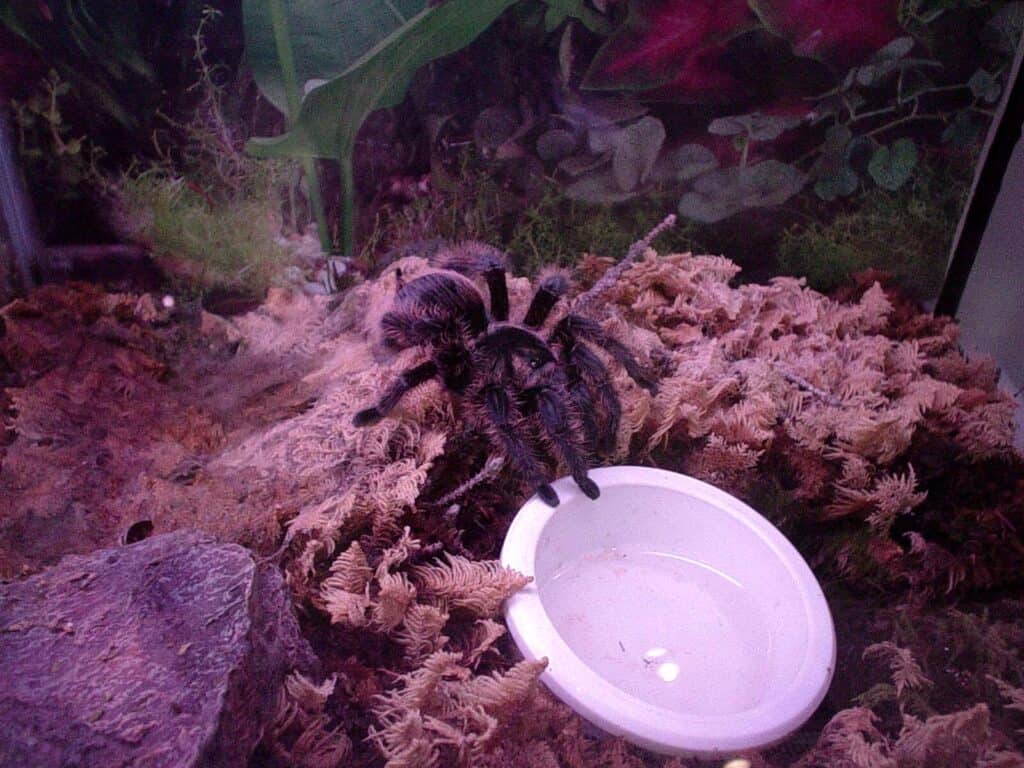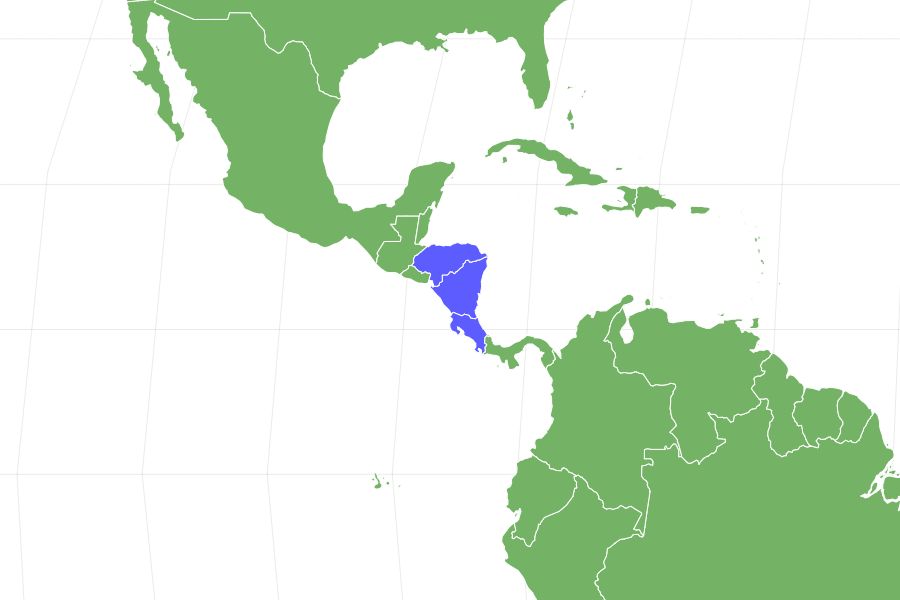Advertisement
Curly Hair Tarantula Scientific Classification
- Kingdom
- Animalia
- Class
- Arachnida
- Order
- Araneae
- Family
- Theraphosidae
- Genus
- Tliltocatl
- Scientific Name
- Tliltocatl albopilosus
Read our Complete Guide to Classification of Animals.
Curly Hair Tarantula Conservation Status
Curly Hair Tarantula Facts
- Diet
- Omnivore
Curly Hair Tarantula Physical Characteristics
View all of the Curly Hair Tarantula images!
One of the furriest tarantulas in the world.
Curly hair tarantulas do have long wooly hair but it is certainly not curly like a goldendoodle. However they do have some of the longest hairs of all the tarantula species. There are around 1,000 different species of these large full-bodied spiders. Curly hair tarantulas are from Central America including Honduras, Nicaragua and Costa Rica. Recently the species has been split into two distinct breeds with Honduran curly hairs in one and Nicaraguan/Costa Rican in the other. They can get to be 3-4 inches long with a leg span of 5-6 inches.
Amazing Curly Hair Tarantula Facts
- They bodies and legs are covered in golden-brown bristles or hairs.
- Curly hair tarantulas can get to be 4-5 inches long.
- They molt their exoskeleton to make room for their growing bodies.
- The females can live more than 20 years.
- They can be kept as a pet and are easy to raise.
Curly Hair Tarantula Scientific Name
The scientific name of the Curly hair tarantula is Tliltocatl albopilosus. They were previously known as Brachypelma albopilosum but are now two breeds. Tliltocatl albopilosus refers to the Nicaraguan curly hairs and Brachypelma albopilosum refers to the Honduran curly hairs.
Curly Hair Tarantula Appearance

Curly hair tarantulas can be kept as a pet and are easy to raise.
©1,600 × 1,200 pixels, file size: 346 KB, MIME type: image/jpeg – License
There are three different colorations of the Curly hair tarantula. Their bodies are all about the same color, dark gray, but the hair colors vary. One type has mostly grayish hairs with a few pinkish hairs interspersed. Another has mostly pink hairs and a third has a bright copper color. Quick note that they don’t actually have “hair” with the bristles actually being called setae, however for the familiarity of their look we will refer to it as hair.
When they reach adulthood they get to be around 3 inches long, the same length as a credit card, with a leg span of 4-5 inches. The females are a little more stout than the males. They have eight segmented legs along with two pedipalps at the front of their body that look like an extra set of arms. They are used for grabbing and holding prey and the males use them in mating.
Curly Hair Tarantula Behavior
Curly hair tarantulas are burrowing animals that can live in a variety of habitats. They are found in both dense jungles and dry deserts. They spend most of their time buried deep in their burrows only coming out at night to hunt for food. Curly hair tarantulas are solitary animals with only one tarantula living in each hole. The entrance to the burrow is covered with a web to protect it.
At night Curly hairs come out to hunt for their prey. They use their size to overpower smaller animals like crickets, roaches, and grasshoppers. They grab their prey, bite with their fangs, inject it with venom and then ball it up with their webs. Using digestive juices they liquefy their victim before sucking their insides up for dinner. They can actually go for months without eating.
If a tarantula is threatened they can flick the urticating hairs off their back causing an irritation to the predator. They may also rear up on their back legs and wave their front legs, making a hissing noise to intimidate the predator.
Curly hair tarantulas are docile and have an easy going temperament. They rarely bite which is another reason they make good pets. They can be a little too low key as pets at times having periods where they move little to none, making them less exciting to watch.
Curly Hair Tarantula Habitat
Curly hair tarantulas live in tropical grasslands, preferring the warm climates that South America provides. They have populations in Honduras, Nicaragua and Costa Rica. Some can be found in the cleared areas of rain forests finding shelter at the base of tall Acacia or Mahogany trees.
Curly hairs are burrowing tarantulas and will live in a burrow in the ground that they either dig or remodel from a previous animal. During the day they spend their time deep in their burrows resting. They are nocturnal and come out at night to hunt and find food. They can create different tunnels at different levels in their burrows to help adjust to the current climate.
As solitary animals you will find one tarantula per burrow with the burrows spaced a good distance apart. The only time they interact with others of their species is during the mating season when the males leave their burrow in search of a mate.
Curly Hair Tarantula Predators and Threats
The main predators of Curly hair tarantulas is the tarantula hawk. It is not a hawk at all but a wasp that uses tarantulas as food for their young. They swoop down and sting an unsuspecting tarantula then haul it off to a burrow where they bury it alive. But before burying it they lay one egg on its paralyzed abdomen. That egg will hatch releasing a larvae that feeds on the still alive tarantula. Sounds brutal but this circle of life keeps tarantulas in check and tarantula hawks thriving.
Other predators include snakes, lizards, birds, and occasionally fox and coyote. Curly hair tarantulas spend most of their day hidden in their burrow resting which helps them avoid predators in broad daylight. At night they do not venture far from their burrow preferring to lurk at the entrance waiting for prey to wander by.
One tactic Curly hair tarantulas use to avoid predators is to stay hidden in their burrows during daylight hours. During the night their setae (or bristles) work like sensory structures to alert them to movement. If they are threatened by a predator they are more likely to flee than fight.
What Eats Curly Hair Tarantulas?
The main animals that eat curly hair tarantulas are tarantula hawks, snakes, lizards and birds. Animals that are nocturnal are the most likely to encounter tarantulas due to the fact that tarantulas spend their days hidden deep in their burrows.
What Do Curly Hair Tarantulas Eat?
Curly hair tarantulas eat crickets, grasshoppers, roaches, any insect that wanders by. But it will also eat small lizards, frogs and mice. They can go for months without eating including periods where they are dormant for months. For captive Curly hair tarantulas it is recommended to feed them 6-8 crickets a month in the warmer months and 1-2 crickets a month in the cooler months. When they are molting they seem to lose their appetite altogether so just give them some time and reintroduce food once a week.
What is the Conservation Status of Curly Hair Tarantulas?
Curly hair tarantulas are listed as a species of “Least Concern” by the IUCN. They seem to maintain a healthy population in Honduras, Nicaragua and Costa Rica.
Reproduction, Babies, and Lifespan
Male curly hairs reach sexual maturity around the age of 5-8 years. This is the time that they venture out away from their burrows in search of a mate. Their mating results in two possible outcomes, either they mate successfully and go on their way or they are eaten by the female! Sounds risky, but the system seems to work, seeing as curly hair tarantulas have a healthy population that continues to prosper.
When male Curly hair tarantulas reach maturity, somewhere between 5-8 years old, they leave their burrows in search of a mate. When they come across a female’s burrow they will tap their leg on the ground outside the burrow like knocking on the door to see if the female is receptive. If she is the male creates a sperm web where he deposits his sperm then transfers it to one of his pedipalps then transfers it to the female.
Female Curly hair tarantulas lay around 300-500 eggs each year. They create an egg sac by spinning a web around them to keep them safe. With a method termed “brooding” the female will turn the sac occasionally to make sure everything is even The mother then keeps the sac deep in her burrow watching over the eggs. When the eggs hatch the mother keeps tabs on the offspring for a few weeks until they are ready to venture out on their own.
The life span of curly hair tarantulas is dependent on their gender. Females have been recorded to live more than 20 years whereas males live closer to 8-10 years. In the pet trade, females are preferred due to their long longevity.
Population
Curly hair tarantulas live underground in burrows in remote locations. This makes it difficult to tally an accurate population. The IUCN has them listed as “Least Concerned” so they seem to have a healthy population.
Related Animals
View all 235 animals that start with CCurly Hair Tarantula FAQs (Frequently Asked Questions)
Are curly hair tarantulas venomous?
Yes, they do have venom but the venom is mild to humans and they rarely bite.
What size tank does a curly haired tarantulas need?
They need a 5-10 gallon size tank but it is better to error on the bigger size.
Can curly hair tarantulas climb glass?
Yes, actually they can cling to the side of their glass aquarium.
Are Curly hair tarantulas venomous?
Curly hair tarantulas are venomous but they have a mild venom. Their venom is not harmful to humans and they rarely bite.
How much do Curly hair tarantulas cost?
The cost varies but the range is $60-$100.
Do Curly hair tarantulas make webs?
They make webs to block the entrance to their nest and to wrap up their eggs but they do not use a web to catch prey for food.
Are Curly hair tarantulas good pets?
Yes, Curly hair tarantulas make good pets. They are the most common tarantula in the pet trade.
Can you keep more than one Curly hair tarantula in the same home?
No, they need to have their own enclosure. They are solitary animals and prefer to live alone.
How big do Curly hair tarantulas get?
They can get to be about 3 inches long with a leg span of 5-6 inches.
Are Curly hair tarantula carnivores, herbivores, or omnivores?
Curly hair tarantulas are carnivores.
Thank you for reading! Have some feedback for us? Contact the AZ Animals editorial team.
Sources
- , Available here: https://journals.biologists.com/jeb/article/214/11/1874/10308/Tarantulas-cling-to-smooth-vertical-surfaces-by
- Tarantula, Available here: http://tarantulas.com/
- Cosley Zoo, Available here: https://cosleyzoo.org/honduran-curly-hair-tarantula/
- The Tarantula Collective, Available here: https://www.thetarantulacollective.com/caresheets/tliltocatl-albopilosus

















